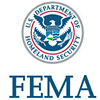Campaign: PPD-8 National Planning Frameworks
It isn't just "plain old Mitigation"
The four-page "DRAFT Mitigation Framework Guiding Principles" doesn't really mention hazards until well into its third page. For our documents to *really* invite comments and commitment from the general public (or indeed, anyone outside of ourselves), it needs to use language that is self-explanatory, as much as possible. Mitigation is not a word that was meant to simply be tossed around on its own, in isolation. SOMETHING ...more »
